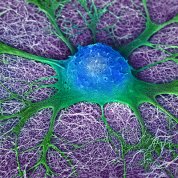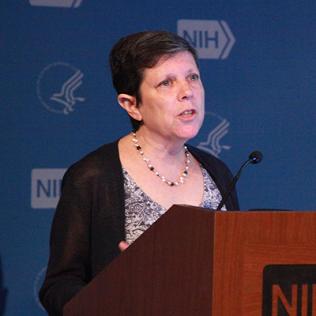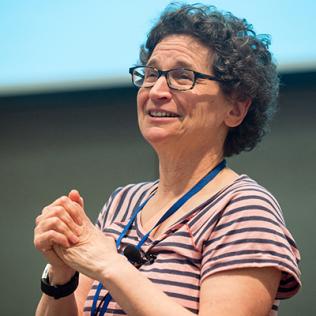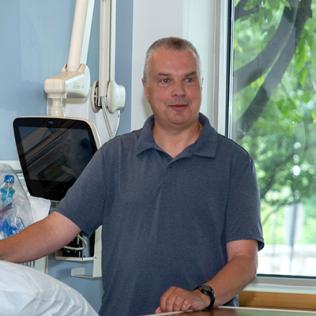
On the Cover
A mouse neural stem cell (blue and green) sits in a lab dish atop a special gel containing a mat of synthetic nanofibers (purple). The cell is growing and sending out spindly appendages called axons (green), in an attempt to reestablish connections with other nearby nerve cells. The research represents hope that one day humans may be able to reverse spinal cord damage.
Mark McClendon, Zaida Alvarez & Samuel I. Stupp, Northwestern University





